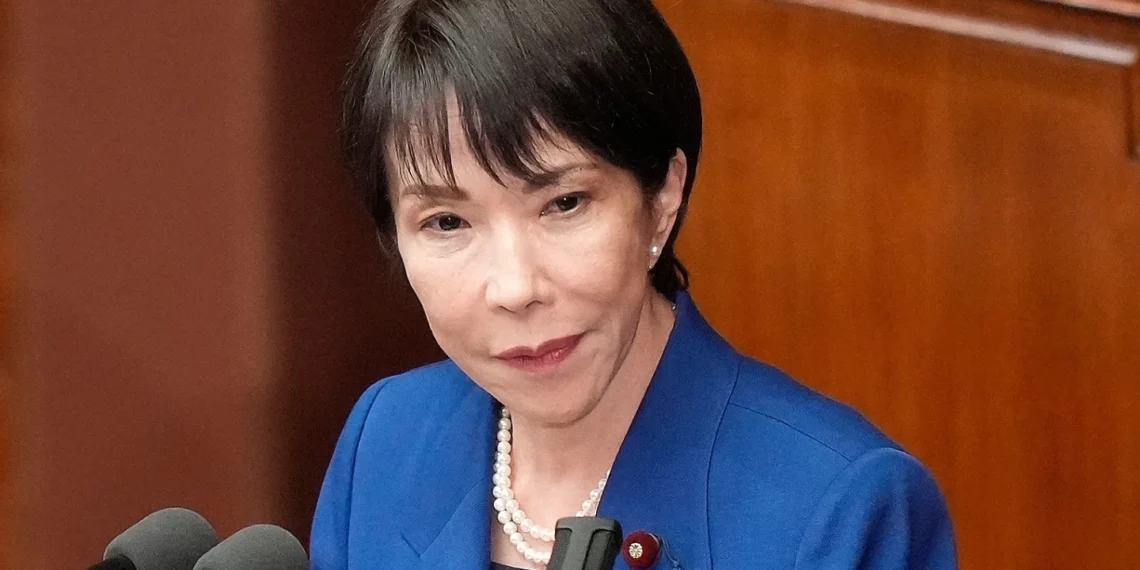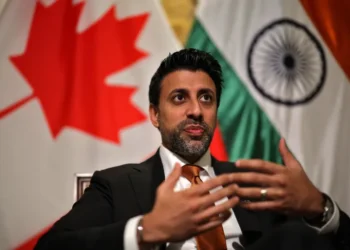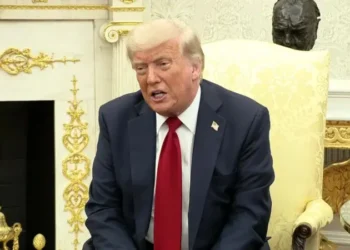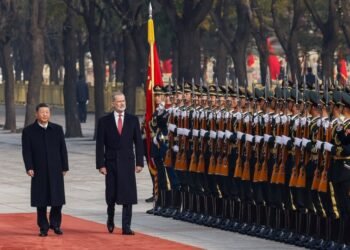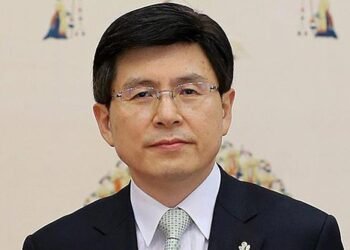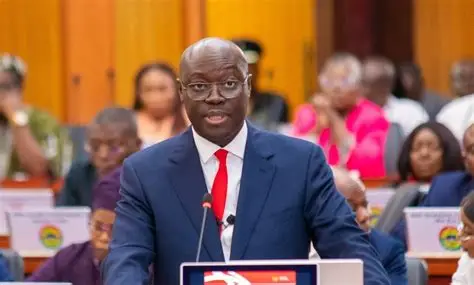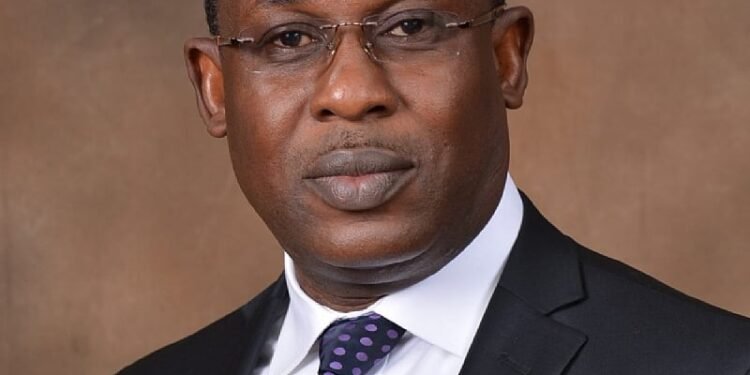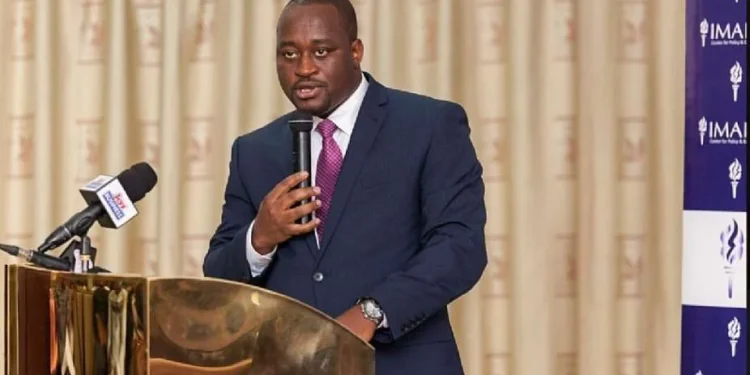Japanese Prime Minister, Sanae Takaichi has stressed that Japan needs foreign workers to make up for the the shortage of labor in the country, which has a rapidly aging and declining population, but only by allowing those who follow the rules.
This came as Takaichi made her first major policy speech today, Friday, October 24, 2025. She took office on Tuesday after being elected Japan’s first female Leader.
Her election ended months of a political vacuum amid power struggles within her party following consecutive election defeats that led to the ruling coalition’s loss of a majority in both houses of parliament.
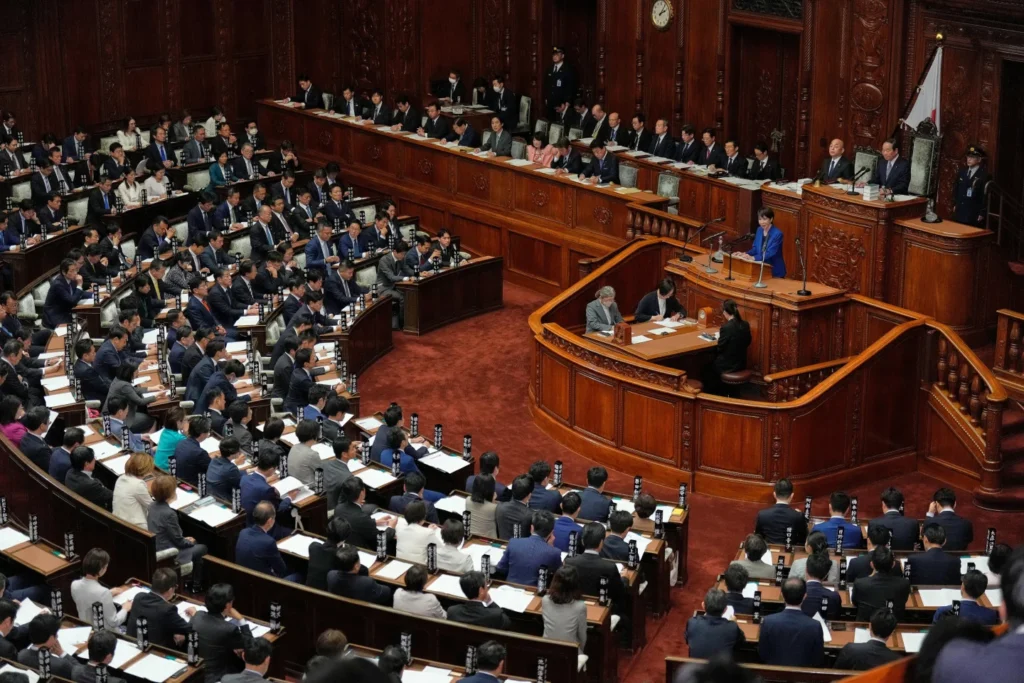
“It is a fact that unlawful activity and violation of rules by some foreigners are causing the sense of unease and unfairness among Japanese people. The government will respond decisively to these activities. It’s not xenophobia.”
Sanae Takaichi
Takaichi assigned Economic Security Minister Kimi Onoda to step up regulations on foreigners in Japan to “enforce compliance” and study possible regulations on land purchases by foreigners, many of them Chinese.
The move caters to some of the frustrated Japanese who are inspired by the “Japanese First” platform by the far-right Sanseito party. The populist surge comes as Japan, a traditionally insular nation that values conformity and uniformity, sees a record surge of foreigners needed to bolster its shrinking workforce.
Government statistics show crime rates among foreigners in Japan have fallen while their population has surged.
Takaichi’s immediate task at home is to tackle rising prices and sagging wages, and win back support from conservatives.
Her Liberal Democratic Party’s new ruling alliance with the right-wing Japan Innovation Party, which replaces an earlier coalition with the dovish centrist Komeito, has raised concerns about Japan’s further shift to the right.
Takaichi Vows Early Revision Of Japan’s Security Strategy
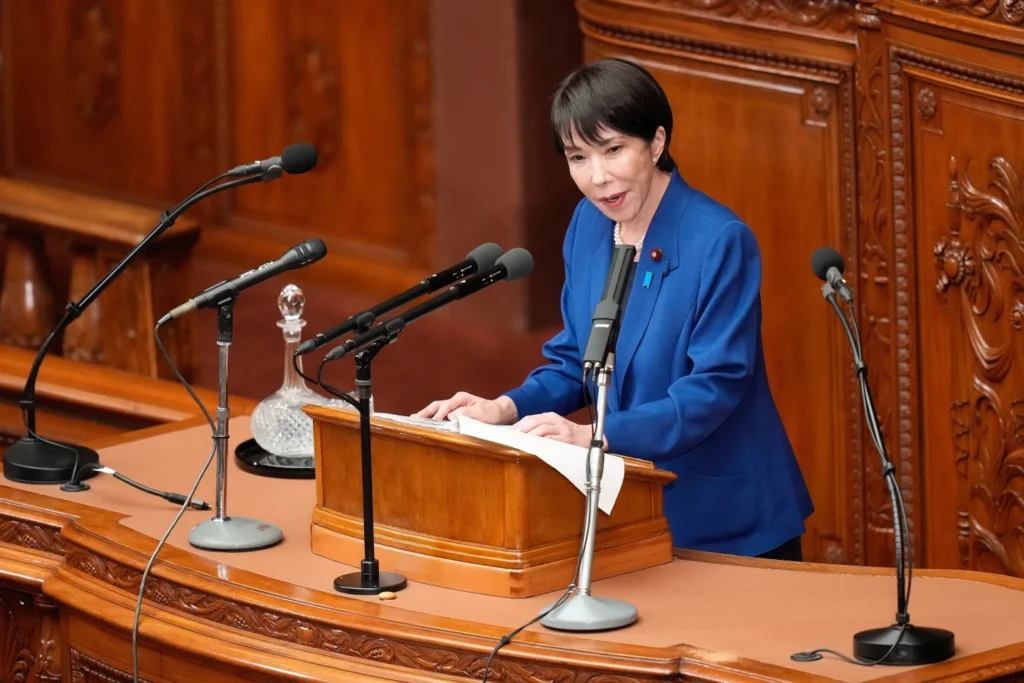
Also, Takaichi pledged to complete an early upgrade of the country’s security strategy and further accelerate Japan’s military buildup and spending.
She asserted that her government will hit an annual military spending target of 2% of gross domestic product by March, instead of by 2027 under the initial plan.
She will revise the security strategy early and have it ready by the end of 2026, she said. Japan used to revise its strategy about once a decade, the last time in December 2022.
She added in her speech at parliament that Japan will upgrade its strategy early due to a change in the security environment, including Russia’s invasion of Ukraine and the Middle East conflict.
“The free, open and stable international order that we were accustomed to is violently shaken in the face of historic change of power balance and intensifying geopolitical competitions.
“In the region around Japan, military activities and other actions from our neighbors China, North Korea and Russia are causing grave concerns. Japan needs to proactively push for its fundamental buildup of its defense power.”
Sanae Takaichi
Her pledge comes days before US President Donald Trump’s October 27-29 visit to Tokyo for a summit, where she is expected to face tough demands from Trump, such as a further increase in Japan’s defense spending and more purchases of costly American weapons. Her meeting with Trump is part of a major diplomatic test that also includes two regional summits.
Takaichi disclosed that she plans to discuss with Trump further strengthening the Japan-US alliance while fostering the two sides’ personal relationship based on trust.
She noted that Japan needs to establish a constructive and stable relationship with China, but that there are “security concerns” between the two sides.
The upgrading of the security strategy may involve more offensive military roles for Japan’s Self-Defense Forces, further easing of restrictions on arms exports and increased military spending, but she did not elaborate on how she plans to fund them
To achieve any of her pledges or policies, Takaichi’s minority government needs cooperation from the opposition.
READ ALSO: GNPC, SONATRACH Forge to Boost Energy Research and Innovation in Africa

